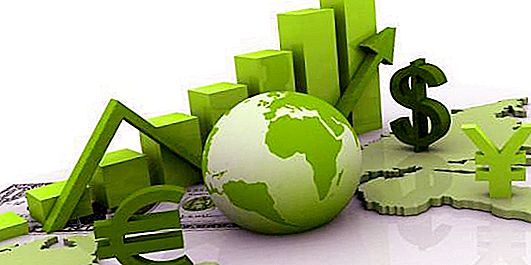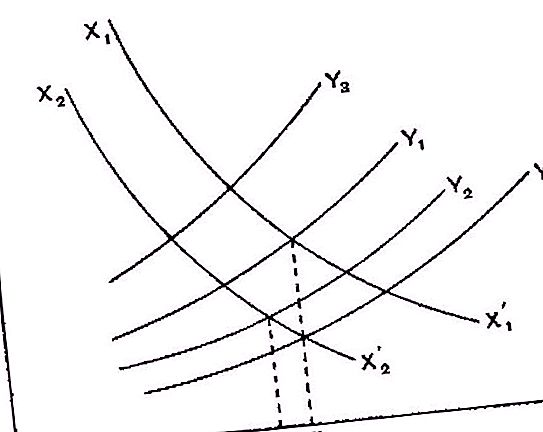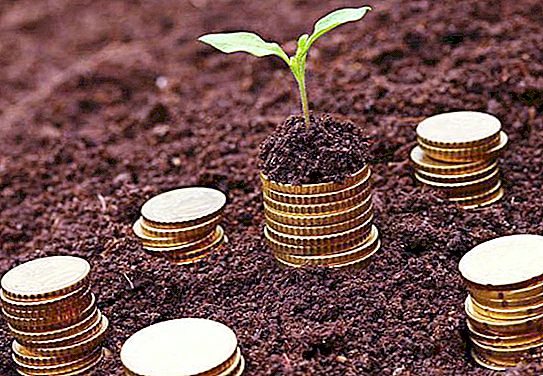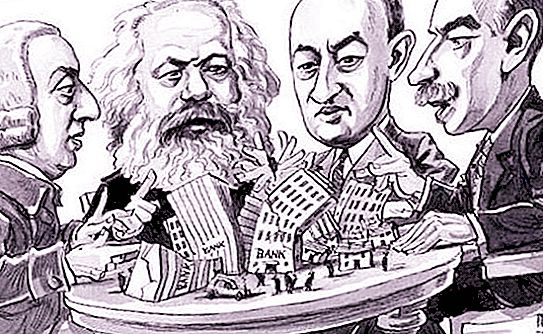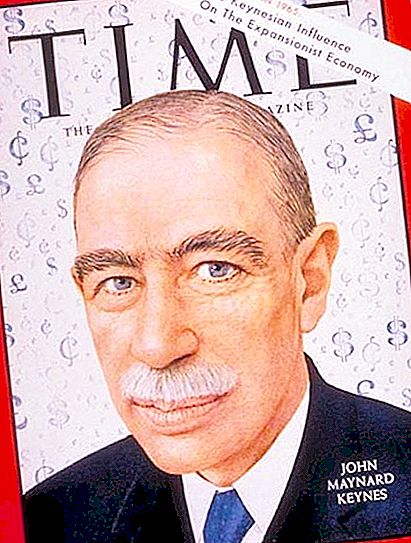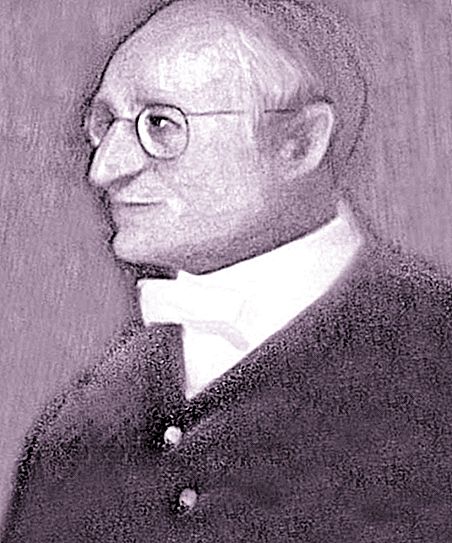In 1936, John Keynes's book, The General Theory of Employment, Interest, and Money, was published. The author interpreted in his own way the then popular thesis about self-regulation of a market economy.
State regulation is necessary
Keynes's theory argues that a market economy does not have a mechanism to naturally ensure full employment and prevent a drop in production, and the state is obliged to regulate employment and aggregate demand.
A feature of the theory was the analysis of problems common to the whole economy — private consumption, capital investment, government spending, that is, factors that determine the effectiveness of aggregate demand.
In the middle of the 20th century, the Keynesian approach began to be used by many European countries to substantiate its economic policy. The consequence was the acceleration of economic growth. With the crisis of the 70-80s. Keynesian theory was criticized, and preference was given to neoliberal theories that professed the principle of state non-interference in the economy.
Historical context
Keynes’s book laid the foundation for “Keynesianism, ” a doctrine that led the Western economy out of a difficult crisis, explaining the reasons for the decline in production in the 30s of the 20th century and voicing means to prevent it in the future.
John Keynes, an economist by education, at one time was an employee of the Department of Indian Affairs, the Finance and Currency Commission, and served in the Ministry of Finance. This helped him revise the neoclassical theory of economics and create the foundations of a new one.
It was also affected by the fact that John Keynes and Alfred Marshall, the founder of neoclassical theory, crossed paths at King's College, Cambridge. Keynes as a student, and Marshall as a teacher who praised his student's abilities.
In his work, Keynes substantiates state regulation of the economy.
Prior to this, economic theory solved the problems of the economy with microeconomic means. The analysis was limited to the scope of the enterprise, as well as its tasks to reduce costs and increase profits. Keynes's theory justified the regulation of the economy as a whole, which implies the participation of the state in the national economy.
A New Approach to Overcoming Crisis
At the beginning of the work, J. Keynes criticizes the conclusions and arguments of modern theories based on Say's market law. The law is the sale by the manufacturer of his own goods for the acquisition of another. The seller turns into a buyer, supply creates demand, and this makes overproduction impossible. Probably only the quickly liquidated overproduction of certain goods in certain sectors. J. Keynes points out that, in addition to commodity exchange, there is a monetary exchange. Savings perform a funded function, reduce demand and lead to the overproduction of goods.
In contrast to economists who considered the issue of demand inconsequential and self-resolving, Keynes made it the central basis of macroeconomic analysis. Keynes's theory says: demand depends directly on employment.
Employment
Pre-Keynesian theories considered unemployment in two of its forms: frictional - due to lack of awareness of workers about the availability of jobs, lack of desire to move, and voluntary - due to lack of desire to work for a payment corresponding to the boundary product of work, in which the “burden” of labor exceeds the salary. Keynes introduces the term “involuntary unemployment”.
According to neoclassical theory, unemployment depends on the marginal productivity of labor, as well as its marginal “burden”, which corresponds to the salary that determines the offer of work. If applicants agree to a low salary, then employment will increase. The consequence of this is the dependence of employment on workers.
What are John Maynard Keynes's thoughts on this? The theory denies it. Employment does not depend on the employee; it is determined by a change in effective demand equal to the aggregate of future consumption and capital investment. Demand is affected by expected earnings. In other words, the problem of unemployment is associated with entrepreneurship and its goals.
Unemployment and Demand
At the beginning of the last century, unemployment reached 25% in the USA. This explains the fact that John Keynes's economic theory gives it a central place. Keynes draws a parallel between employment and the crisis of aggregate demand.
The level of income determines consumption. Inadequate consumption leads to reduced employment. John Keynes explains this by “psychological law”: income growth leads to an increase in consumption by a share of its growth. The other part is accumulating. Increasing income reduces the propensity to consume, and to accumulation - increases.
Keynes calls the ratio of growth in consumption dC and savings dS to increase in income dY the boundary desire for consumption and accumulation:
- MPC = dC / dY;
- MPS = dS / dY.
The decrease in consumer demand is offset by an increase in investment. Otherwise, employment and the growth rate of national income are reduced.
Capital investment
The growth of capital investments is the main reason for effective demand, lower unemployment and higher public income. Therefore, the increasing size of accumulations should be compensated by the increase in demand for capital investments.
In order to secure investments, one needs to transfer savings into them. Hence the Keynesian formula: investment is equivalent to accumulation (I = S). But in reality this is not respected. J. Keynes notes that the savings may not correspond to investments, since they depend on income, investments on the rate of interest, profitability, taxation, risk, and market conditions.
Interest rate
The author writes about the probable return on capital investment, its marginal efficiency (dP / dI, where P is profit, I is capital investment) and interest rate. Investors invest money while the marginal efficiency of capital investment exceeds the interest rate. Equality of profit and interest rate will deprive investors of income and reduce the demand for investment.
The interest rate corresponds to the margin of return on capital investment. The lower the norm, the greater the investment.
According to Keynes, the accumulations are made after the satisfaction of needs, so the growth of interest does not lead to their increase. Interest is the price of abandoning liquidity. John Keynes comes to this conclusion on the basis of his second law: the propensity for liquidity is determined by the desire to have the ability to turn money into investment.
Money market volatility increases the craving for liquidity, which can be overcome by a larger percentage. The stability of the money market, on the contrary, reduces this desire and the interest rate.
Keynes sees the rate of interest as a mediator of the influence of money on social income.
An increase in the amount of money raises a liquid supply, their purchasing power decreases, and accumulation becomes unattractive. The interest rate is decreasing, investments are growing.
John Keynes advocated a reduction in interest for the infusion of savings on the needs of production and increase the money supply in circulation. From here comes the idea of scarce financing, which implies the use of inflation as a means of maintaining business activity.
Interest rate reduction
The author proposes to increase investment through fiscal and monetary policy.
Monetary policy is to reduce interest rates. This will reduce the marginal efficiency of investments, making them more attractive. The government should release as much money as is necessary to reduce the interest rate.
Then John Keynes will come to the conclusion that such regulation is ineffective in a crisis of production - investments do not respond to a drop in the interest rate.
Analysis of the marginal efficiency of capital in the cycle allowed us to associate it with an assessment of the future benefits of capital and confidence among entrepreneurs. Restoring confidence by lowering the interest rate is not possible. According to John Keynes, the economy may be in a “liquid trap” when the growth of the money supply does not reduce the rate of interest.
Fiscal policy
Another method of increasing investment is the budget policy, which consists in increasing the financing of entrepreneurs at the expense of budget funds, because private investment during the crisis is significantly reduced due to pessimism of investors.
The success of the state budget policy is the growth of solvent demand, even with a seemingly useless waste of money. Keynes considered government spending that did not lead to an increase in product supply during the crisis of overproduction to be preferable.
To increase the volume of resources for private investment, it is necessary to organize public procurement of goods, although in general Keynes insisted not on increasing state investments, but on investing the state in current investments.
Another important factor in stabilizing the crisis of overproduction is an increase in consumption through public servants, social labor, and the distribution of income into groups with maximum consumption: for wage-earners, the poor, according to the "psychological law" of increasing consumption with low incomes.
Multiplier effect
In chapter 10, the Cannes multiplier theory is developed as applied to the marginal propensity to consume.
National income directly depends on investment, and in a volume significantly exceeding them, which is a consequence of the effect of the animation. Investments in the expansion of production of one industry have the effect of a similar effect in related industries, just as a stone causes circles on the water. Investing in an economy increases income and reduces unemployment.
In times of crisis, the state should finance the construction of dams and road construction, which will ensure the development of related areas of production and increase consumer demand and demand for investment. Employment and income will increase.
Since income is partially accumulated, its animation has a border. Slowing consumption reduces capital investment - the main reason for the animation. Therefore, the multiplier is inversely proportional to the marginal propensity to save MPS:
M = 1 / MPS.
Change in income dY from investment growth dI exceeds them by M times:
- dY = M dI;
- M = dY / dI.
The increase in social income depends on the volume of growth in consumption - the marginal propensity to consume.


